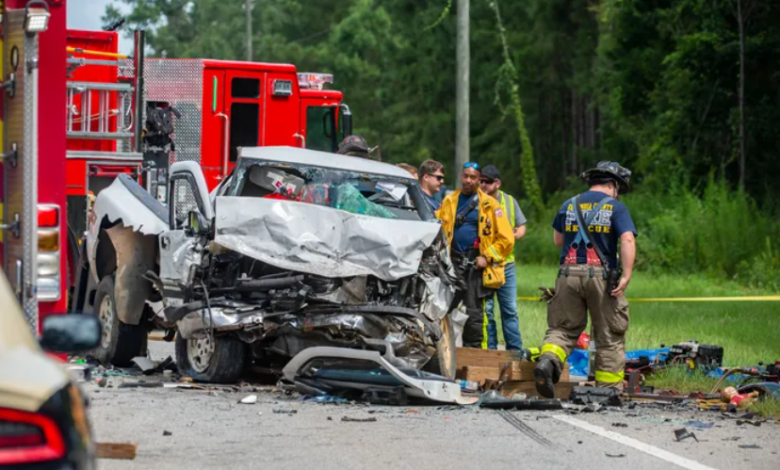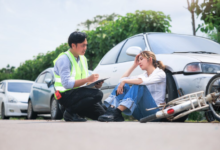The First 60 Minutes: Critical Actions After a Highway Collision

Highway collisions are unexpected and frequently frightening events that can leave individuals involved shaken and unclear about what to do next. The seconds right after a crash are very important for several reasons: to ensure everyone’s safety, to keep evidence, to stop more accidents, and to get medical help quickly. This article talks about the most important things that need to be done in the first 60 minutes after a traffic collision to save lives, follow the law, and help people recover quickly.
Immediate Safety and Scene Assessment
When a collision occurs on the roadway, the first responsibility is to safeguard the safety of all those involved. If you can, it’s very important to move to a safe place to avoid more accidents or injuries. Highways are fast-moving places, and parked cars can quickly become dangerous for other drivers. If the car is still working and the area is safe, it is best to move off the road to the shoulder or to a nearby safe spot. But if someone is hurt badly or the car can’t be moved safely, it’s best to leave the situation where it is so as not to make injuries worse or mess up evidence. It’s just as crucial to look for risks like leaking fuel, fire risk, or debris on the road.
Checking for Injuries and Providing Basic Aid
After safety has been handled, the next crucial step is to evaluate the physical state of all the people engaged. This entails finding out right once if someone is hurt and how bad the injuries are. Some injuries cannot be obvious right away, but they might become life-threatening if you don’t get medical help right away. If you know how to conduct basic first aid, you can help injured people stay stable until help arrives. You shouldn’t move injured people unless there is an urgent threat, such as a fire or the chance of an explosion. You can also stop shock by keeping injured people calm and safe. During this period, it is very important to call emergency services to report injuries and ask for medical help.
See also: Why Partnering with a Skilled custom fastener supplier is Vital for Modern Manufacturing
Preserving Evidence and Documenting the Scene
Gathering and preserving evidence promptly following a collision is critical for any subsequent legal or insurance procedures. Taking pictures of the accident scene, the damage to the vehicles, the road conditions, and any visible injuries will help make a clear and unbiased record of what happened. Taking pictures from different angles is vital, such as showing where the cars are in relation to the road and any traffic signs or signals that are important. You should also write down the time, the weather, and any things that could have caused the accident. This extensive evidence is very helpful for figuring out who is responsible, settling disagreements, and speeding up the claims process.
Communicating with Other Parties Involved
Interactions with other drivers, passengers, and witnesses should be handled carefully. For follow-up processes, it’s important to share important information, including names, phone numbers, insurance policies, and car registration numbers. It is best to stay calm and not use language that is confrontational or confess to blame because these kinds of words can be used against you in court. Keeping a calm and polite attitude helps ease stress and makes it easier for everyone to work together. If you can, asking for insurance information and car details ensures that everyone has the information they need to file their claims. Clear communication also helps things go more smoothly and eliminates misunderstandings.
Preparing for Legal and Medical Follow-Up
The first hour following a car accident on the highway is critical for subsequent medical and legal procedures. It is critical to schedule a comprehensive medical exam as soon as possible, even if the injuries do not appear to be severe. Some ailments, such as internal bleeding or whiplash, cannot appear straight away. Medical records assist with insurance claims and any legal action that can arise. It’s also important to understand your legal rights and obligations. Speaking with an experienced lawyer can help you understand how to evaluate liability, file a claim for damages, and pursue legal action. Obtaining a California highway patrol accident report online provides an official record that you can utilize in certain scenarios. Taking the initiative in follow-up actions ensures that recovery and resolution progress smoothly.
Conclusion
The first hour after a highway crash is a very important time when careful, calm, and organized measures can make a big impact. Putting safety first, taking care of injuries, calling emergency services, and meticulously documenting the scene all help safeguard lives and legal interests. These efforts are helped by clear communication and timely reporting to insurance companies. Managing emotional responses also helps with overall rehabilitation. Getting ready for future medical and legal follow-up makes sure that the way forward is as clear as feasible. Being calm and knowledgeable during this important moment makes everyone involved in a highway collision safer, more responsible, and more at ease.

